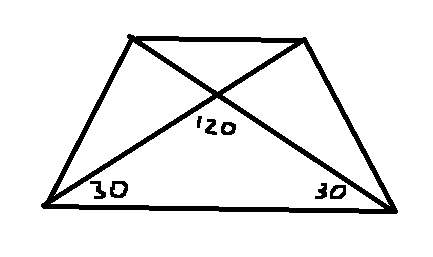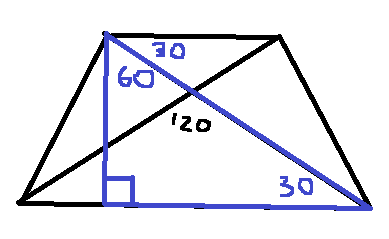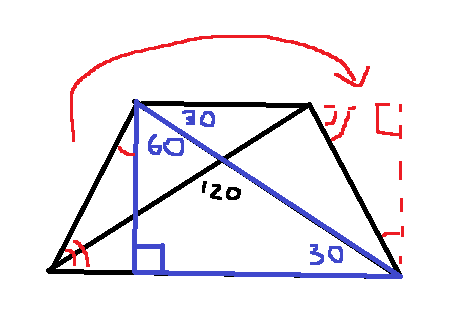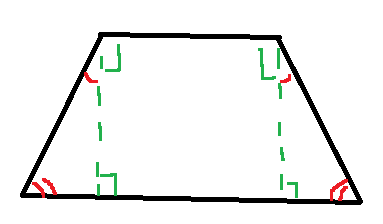another way to solve
-
I found another way to solve this question that is simpler in my opinion (note: I have taken a high school geometry class before)
First solve for the base angles of the lower triangle. The lower triangle must be isosceles because it is in an isosceles trapezoid so the base angles must be equal. Since angles in a triangle add up to 180, the sum of these angles is 180-120=60. Each angle is 30 because 30=30 and 30+30=60.

Next draw a 30-60-90 triangle with one of the 30 degree angles and by breaking up a right angle on the top base into 30 and 60. Notice the diagonal of this 30-60-90 triangle is the same as the diagonal of the isosceles trapezoid.
 g)
g)Then move the triangle to the right of the 30-60-90 to the right of the trapezoid like this to create a rectangle of the same area:

(optional) To prove why this works you could draw a rectangle inside the isosceles trapezoid. The angles with one red mark are equal to each other. The angles with two red marks are also equal to each other. An angle with one red mark and an angle with two red marks adds up to 90 (or 180-90) because they are acute angles in a right triangle.

Next, let x be the length of the diagonal. This is the hypotenuse of the 30-60-90 triangle! Because of this, we can identify the lengths of the rectangle as x/2 and x(√3)/2 using the ratio of 1, √3, 2. To find the area of the rectangle (which is equal to the area of the isosceles trapezoid), simply multiply the sides x/2 and x(√3)/2 which equals x²(√3)/4, the formula found in the video.

Finally, set x²(√3)/4 equal to 36(√3).
Divide both sides by √3 to get
x²/4 = 36
Multiply both sides by 4 to get
x² = 144
Take the square root to get
x = 12Since we set x as the diagonal of the trapezoid, the diagonal of the trapezoid is 12.